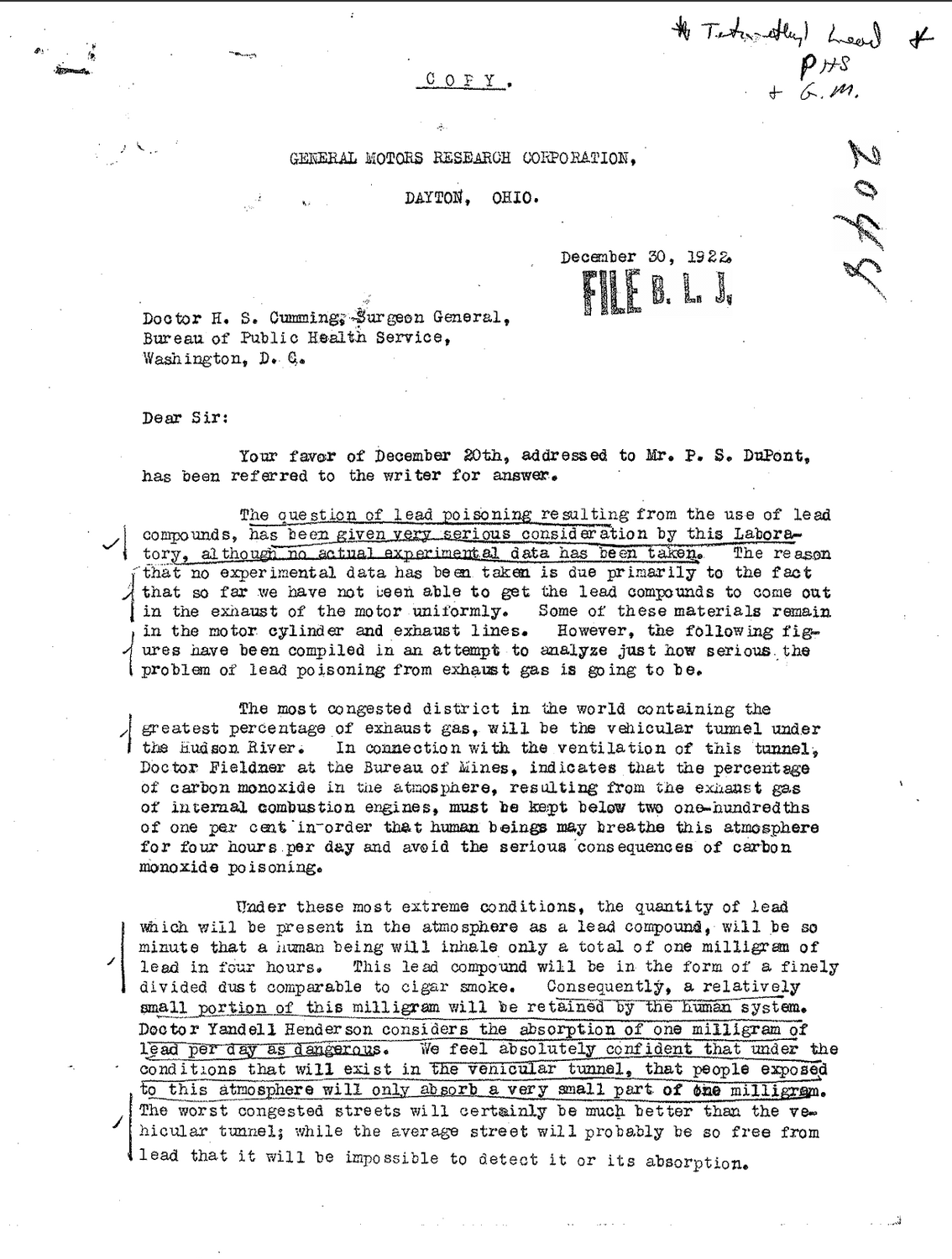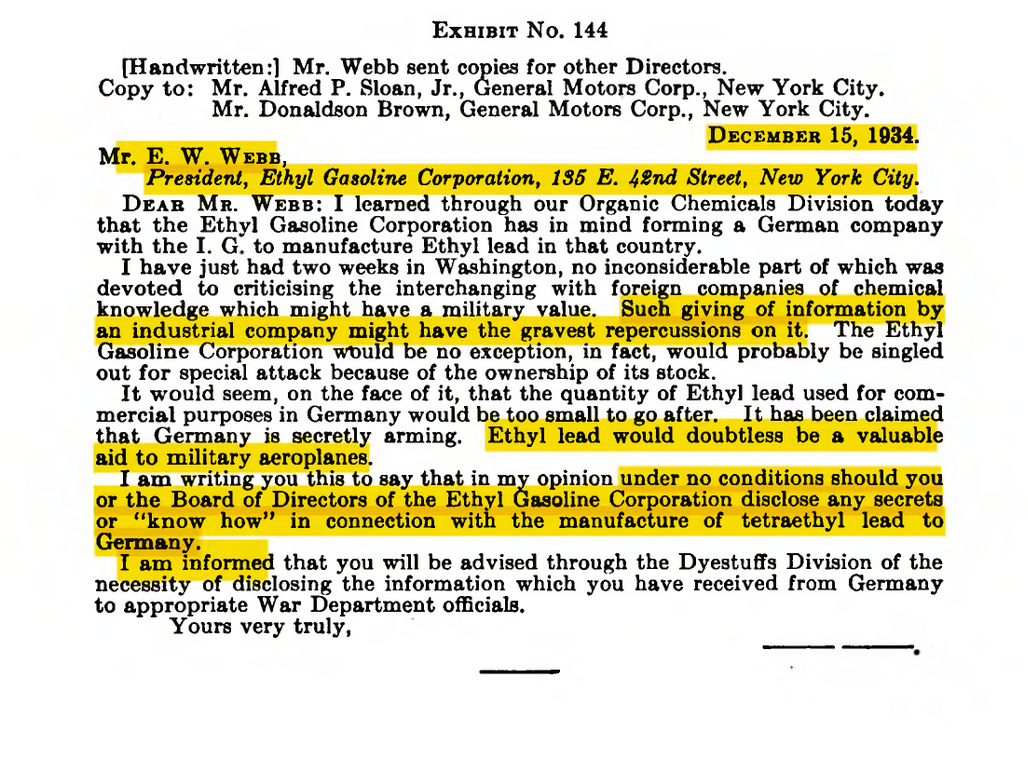Ethyl Gas Safety in the Interwar Period
Kate Tadeo
Of the two documents I read, I was most interested in the order in which I read the articles and the dates they were produced. The first document I read was a small collection of letters, the first from December 1935 to Ethyl Gas Corp (presumably from the Chief of Army Air Corps) warning against the collaboration or trade with Germany or disclosing of information to war department officials addressing military value and the use of ethyl lead as airplane fuel. The following letter is a direct response, offering a rebuttal saying it is not valuable for the military and that they will not stop collaboration with Germany but will include clauses in contracts that would give the chief approval. This letter addresses the newness of the substance, stating ethyl fluid had been being manufactured for twelve years at the time this letter was being written. While it makes the point that any organization or country could make it, it fails to include any health perspectives on the matter; it just aims to push forward the expansion of using this and collaborating with Germany to take ethyl fluid international. I found the American and German collaboration interesting in this particular time frame, as it is during the interwar period, so close to the start of WWII. The final letter is from July 1935 to the Assistant Director of the Foreign Relations Department from the General Manager of Du Pont Organic Chemical Department regarding technical and engineering information being shared with Germany as part of the joint venture the previous letters were referencing and talk of also manufacturing Tetraethyl Lead in England.

This document starkly contrasted the other one I read, which was a 1925 letter from a doctor at the Harvard University School of Public Health to the Surgeon General of the United States Public Health Service. In this letter, Dr. Hamilton (?) warns that they have been receiving letters for a couple of weeks from newly formed unions of workers on the topic of tetra-ethyl lead and goes on to explain that New York and New Jersey had at first banned, and later sanctioned the sale of tetraethyl lead, but finds the advice the decision was based off, a report from the Public Health Council of New York State, to sanction sales of the product to be unsatisfactory. This was based on a commissioned report by the Bureau of Mines. The author then states that other doctors also agree this report was unsatisfactory and deems the union workers’ suggestion to investigate tetraethyl as valid, as the decision could have been based on a biased report, financed by General Motors. Dr. Hamilton also acknowledges that General Motors did not wait for any results of the effects of tetraethyl lead before putting it on the market, and therefore explains this letter comes to advocate on the union workers’ behalf in agreement that tetraethyl lead could be dangerous to both the workers and potentially to motor car users as well, and that there needs to be a fair investigation of the substance.

This combination of documents with a decade-long gap in between was pretty disheartening. It is sad that in our capitalist society, themes of unfairness always prevail, where workers and lower-class workers also bear the consequences of the decisions people at the top make. The switch of the topic of the letters concerning tetraethyl lead switching from health concerns to the international potential of usage is sad but not surprising; however, it is a tragedy that health concerns were ignored for the success of business ventures.
